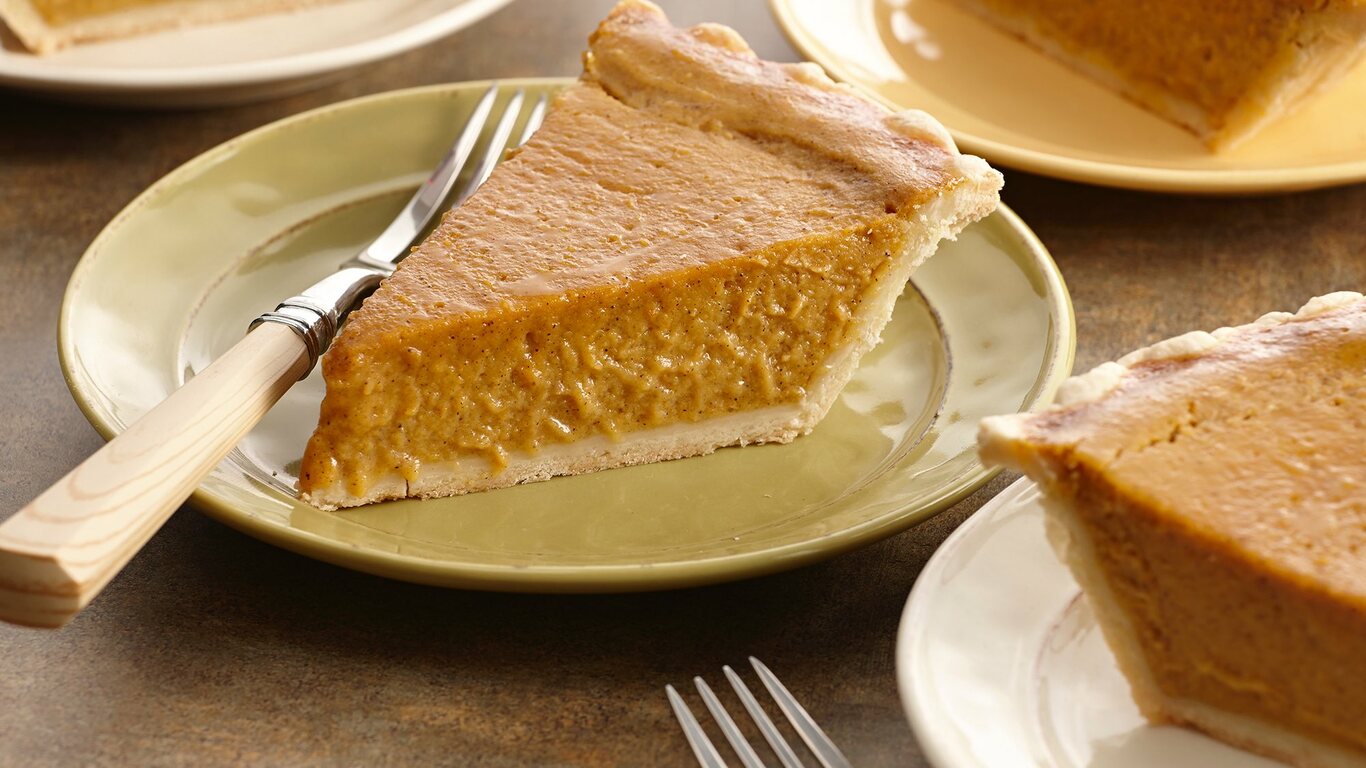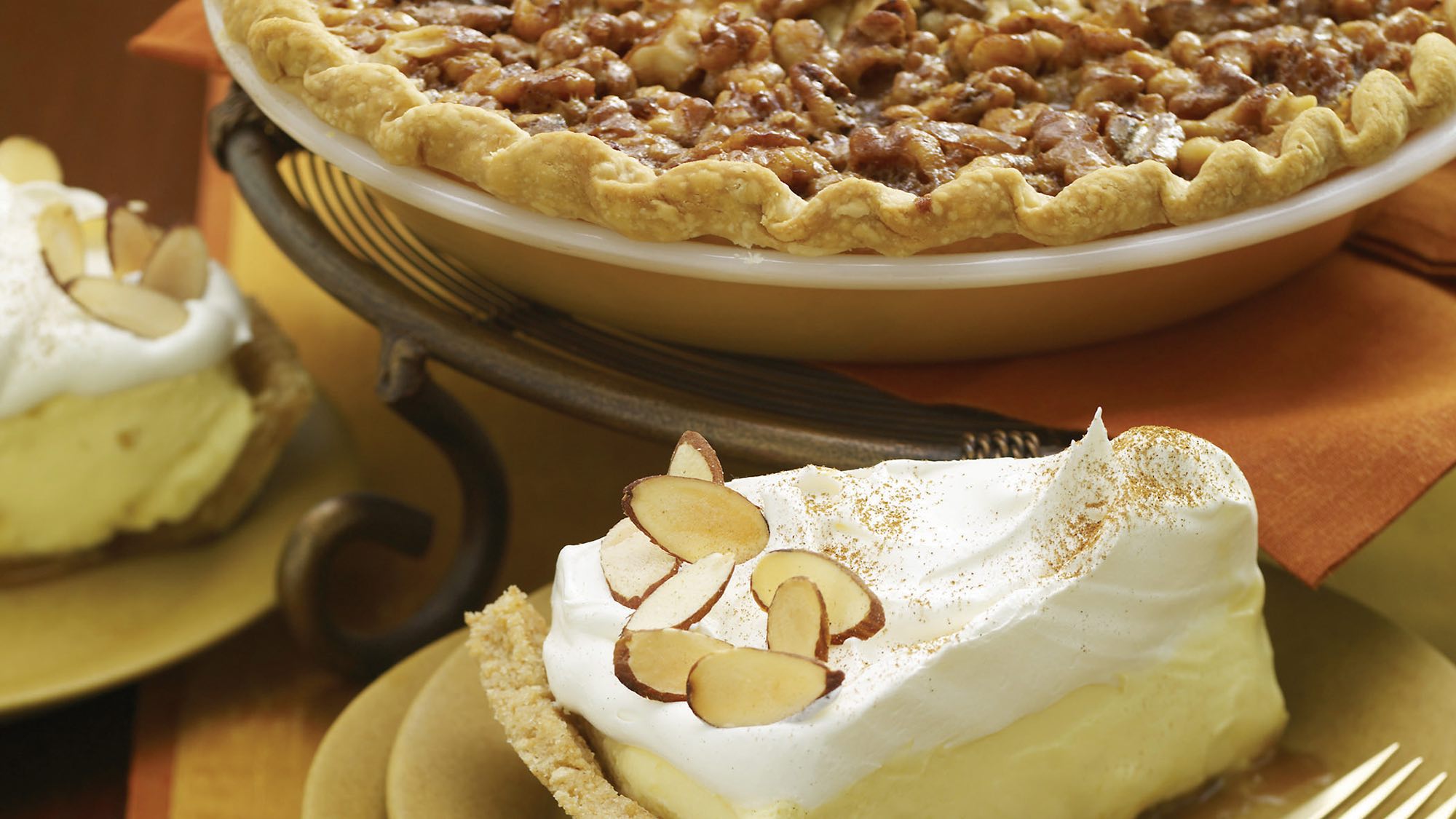Baked custards are everywhere on the holiday dessert table. Apart from apple pie, just about every other holiday classic calls for baking a sugar-and-egg slurry until perfectly set. It seems simple enough, but custard pies are notoriously tricky—especially when canned pumpkin gets involved.
Perfect custard pie is all in the technique. Nail it, and you’ll be rewarded with silky-smooth filling and crisp, browned pastry—but mess it up and you’re in for a soupy mess, or worse, a crust full of pumpkin spice scrambled eggs. The good news is that the rules of perfect baked custards are simple and finite. You got this. Here’s a start-to-finish guide to banishing clumpy, weepy, disappointing pie from your holiday table for good.
Photo: McCormick
Always Blind Bake
Custard pies need a crispy crust, so blind-baking is non-negotiable. This has less to do with the amount of liquid the filling gives off—which is a lot less than, say, raw apples—than how long they’re in the oven. Most custard pies hang out at 350ºF for less than an hour, which just isn’t enough time to completely cook the custard and the crust beneath it. Give your pie the head start it needs with a proper, low-and-slow blind bake: line crimped pastry with foil or parchment, weigh down with granulated sugar, place on a baking sheet for extra heat conductivity, and bake for an hour at 350ºF.
Technology is Your Friend
Just because custards have been around since the dawn of time doesn’t mean you’re chained to old-school techniques. Whenever I need to bring an eggy solution to a specific temperature, I skip the whisks and double boilers and go straight for my stick blender and microwave—a technique that yields more consistent results in a fraction of the time. Just blitz all the filling ingredients together, transfer to a microwave-safe vessel, and nuke in 15-second increments until it thickens to the desired degree or reaches the target temperature. Pour into a blind-baked crust and get on with your day. Speaking of which…
Photo: McCormick
Hot Crust, Hot Custard, Can’t Lose
Pouring hot filling into a barely-thawed crust makes for doughy crust and undercooked custard, and cold filling in a hot crust is a one-way ticket to lumps and clumps. Neither of these are ideal. For a filling that’s silky all the way through, your crust and filling need to be roughly the same temperature when they go into the oven.
I find the best—and fastest-cooking—results come from hot custard and freshly blind-baked crusts. If you’re the type to bake off pastry shells and freeze them, pop thawed crusts in a 350ºF oven to warm them through before adding the custard. Avoid baking cold custard in a cold shell, though; it’ll take so much longer to cook that you run the chance of it turning to rubber.
Low and Slow Is the Way to Go
The highest oven temperature you’ll see in a custard pie recipe is 375ºF—any higher than that and you run the risk of curdling. For me, the sweet spot is between 35-45 minutes at 325 or 350ºF, but the exact temperature matters less than avoiding over-baking at all costs. When the edges are firm, but the center jiggles gently when you shake the pan, your pie is done. Turn the oven off immediately, open the door—propping it open with a wooden spoon if needed—and leave the pie in the oven until both have totally cooled off. Cooling a baked custard as gradually as possible prevents it from puffing, sinking, or wrinkling, so don’t rush this step.
By this point, you should have a gorgeous little pie, but you’re not quite done yet. Custards firm up as they cool, so if you’re after perfectly clean, sharp slices, your pie needs to be fully set—and the only way to accomplish this is with an overnight rest in the fridge. Cover the pie with plastic wrap or foil, chill overnight, and bring to room temperature before serving. No matter how you top ‘em, you’re in for the smoothest, silkiest custard of your life.
This article was written by A.A. Newton on Skillet and shared by A.A. Newton to Lifehacker from Lifehacker and was legally licensed through the NewsCred publisher network. Please direct all licensing questions to legal@newscred.com.









